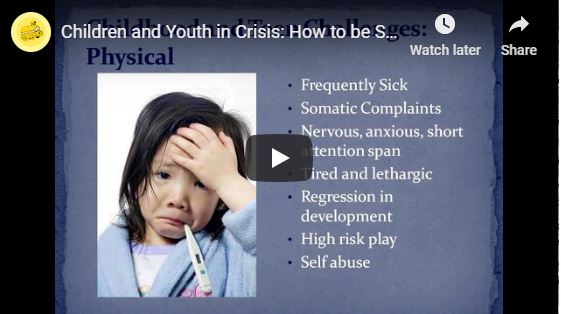Tutoring At Domestic Violence Shelters
Watch: Tutoring at Domestic Violence Shelters
This specialized training is required for all tutors who will be working at a domestic violence shelter. Experts share their extensive knowledge of the effects of domestic violence and how tutors can most effectively work with children who are victims of domestic violence.
What Are Domestic Violence Shelters?
- Domestic Violence (DV) Shelters are short to long-term facilities designed to provide protection to women and children fleeing abusive situations. Depending on the site, the length of stay varies from 1 month to 18 months, or longer.
- Sites are unmarked buildings or houses usually located in residential neighborhoods.
- Tutoring can be 1-on-1 or group setting.
- Students range in age from K-12; some DV shelters do not allow teen boys (over age 13) to stay at shelters.
General Guidelines and Protocols
- Many locations will only accept female tutors.
- Maintaining confidentiality is of utmost importance. Tutors must not share the location address or the name of the student or parent, even with a partner or close friend. The address must not be shared through any type of written communication.
- For first sessions, tutors may meet their coordinator at a location nearby and walk to the shelter together.
- Some sites require volunteers to sign a confidentiality form and/or attend an orientation prior to beginning tutoring.
- Tutors who violate confidentiality policies will be dismissed.
Tutoring Tips
- Students at DV sites may have experienced violence or witnessed violence directed at a close family member. They are grappling with this trauma in addition to being displaced from their homes.
- Tutors volunteering at DV sites must be compassionate and sensitive to student needs and aware of possible physical, emotional, social, and behavioral effects that may impact tutoring sessions. This will be discussed in more depth during tutor training.
Each child deals with trauma differently. Students may:
- Act out or withdraw
- Refuse to go to school
- Act as a parent substitute
- Lie to avoid confrontation
- Excessively seek attention
- Be overly manipulative or dependent
- Older students may want to talk about their trauma. Tutors should listen compassionately but not offer advice or counselling. Students at DV sites already have social workers and therapists.
- Younger students may express trauma through drawing or being creative. Tutors should not ask probing questions if students draw troubling images. If something a student creates suggests abuse, it should be reported to the regional coordinator.
- If students act out during sessions, tutors should pay as little attention to negative behavior as possible and attempt to redirect to something more positive.
- If students are disengaged and withdrawn, tutors should try fun activities and use student interests to plan sessions.
- It is important to remember that not every child who experiences trauma will manifest any or all of these symptoms and behaviors.
- It is essential to be consistent and notify your student well in advance if you need to discontinue tutoring at any time. Students at DV sites have typically suffered loss after fleeing or being separated from friends and family members.
- The most important thing tutors can give their student is confidence in their abilities and a desire to do well in school.

